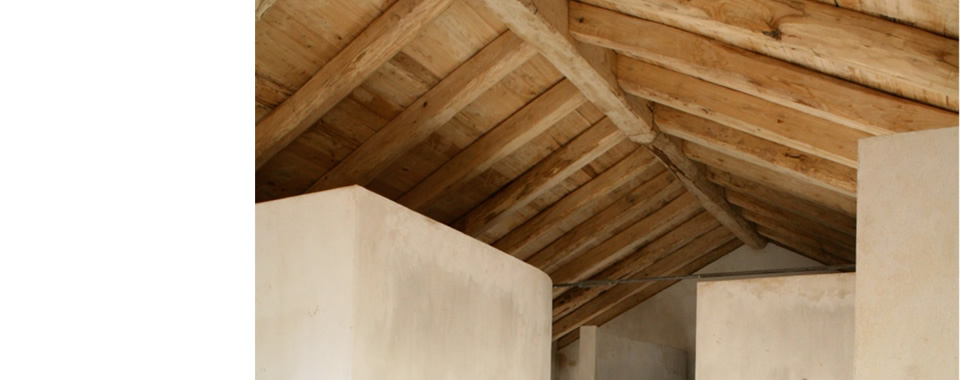

Score - Sustainable Construction in Rural and Fragile Areas for Energy efficiency
Guidelines for Integrated territorial Planning:
System (heating, conditioner)
Guidelines for integrated territorial planning – RECUPERATION
Well heat-protected and vacuum constructed buildings achieve very low demands for heating energy, however a lot of heated energy is required to cover the ventilation losses, and those are losses that are arising from the air exchange. If there is a bad air exchange that s our effect well-being and allows for mold to accumulate. Therefore, forced ventilation with intake of air filtration and heated water recovery is necessary.
Ventilation equipment is constituted of the following components:
- Air supply from the exterior to do ventilation system, in case that the air temperature is lower than 1 ° C the air must be in this part heated to avoid freezing in heat recovery device. This can be executed with electric preheating, or with heat transmitter (water-air), tied to a central heating system or with ground heat transmitter.
- The ventilation system with filters and two air extract ventilators and air distribution per object. The differential pressure between exterior and the interior of the building and the amount of the air exchange can be determined with the power regulation of the both ventilators. Ventilation devices should have the capacity from 0,5 to 1 exchange of the whole volume of ventilation premises per hour.
- Penstocks are leaded to each living space (definitely not in bathroom, toilet or kitchen). Meanwhile the drainage systems are installed in kitchens, bathrooms and toilets. For air to pass from living areas into the air drainage rooms we must install ventilation lattices into the door. In kitchen we shall not extract air above the stove, because the dirt will accumulate in the ventilation pipes.
- The ventilation system requires regular maintenance, especially regular are filters exchange.
Heat recuperation system in the ventilation returns the heat of exhaust air, which is entering into the building. It means that in winter keeps the heat in the building and in summer time preserving the cold. During recuperation is important how well transfers the heat, since this depends how much energy it saves.
Excellent recuperation systems have the following characteristics:
- The heat transmitter should have large surface; at least 20 sq. m per 100 m³/h of volume flow. Therefore the recuperator with capacity of 400 m³/h should have at least 80 sq. m. of surface for heat exchange.
- They have a very low energy consumption for ventilators drive (from 0,24 to 0,30 Wh/m³ of pumped air).
- Are very quiet, so it can be placed next to the living areas.
- Have a heat transmitter, which additionally to the heat recuperation restores the humidity, so it increases humidity in the winter times and enlarger the effect of recuperation. The recuperation involves also condensing energy of humidity that is condensing on this heat transmitter.
Indication for the Bio-construction Action Plan
- Based on our opinion some people are insufficiently aware or the don’t posses enough information for this kind of ventilation system in order to know its advantages. For some, the installation of ventilation system is unnecessary cost, meanwhile the others are not even considering it.
- We are agreeing with the regulation, which determines the technical requirements for ventilation and air conditioning of the buildings and with technical demands for mechanical ventilations systems if they are installed into the building. So that people can be more informed.
Possible criteria for MED bio-housing quality certificate
- To determine the quality of ventilation system devices, are important next two data: size of thermal efficiency of the device in recovery of wasted heat and energy power consumption for conduction and drainage on 1 m3 of air. There are great differences on the market concerning this data. We can compare the devices only if data are measured on the same way, using the same method, namely the comparison of the data is meaningless.
- Some standards including the EN 308 method are noting for how much the air has warmed, while it passed trough exterior to the interior of the building (air warms up also the casing of the device), meanwhile the others standards are noting for how the internal worn out air has cooled leaving the building.
- Comparison of the thermal efficiency it makes sense only at the same size air flow and measurements by the same procedures, as now some suppliers claim that their devices have up to “90%” efficiency and are misleading for the customers. At very small volume flow rates yields are high even in bad devices, but the device actually never operates in such small air flows. It would be better if all standards would be determined by the same method and measurement would be carried out by the same procedure.
Case studies
− Bistra hiša - Smart house (Martjanci, Slovenia)
